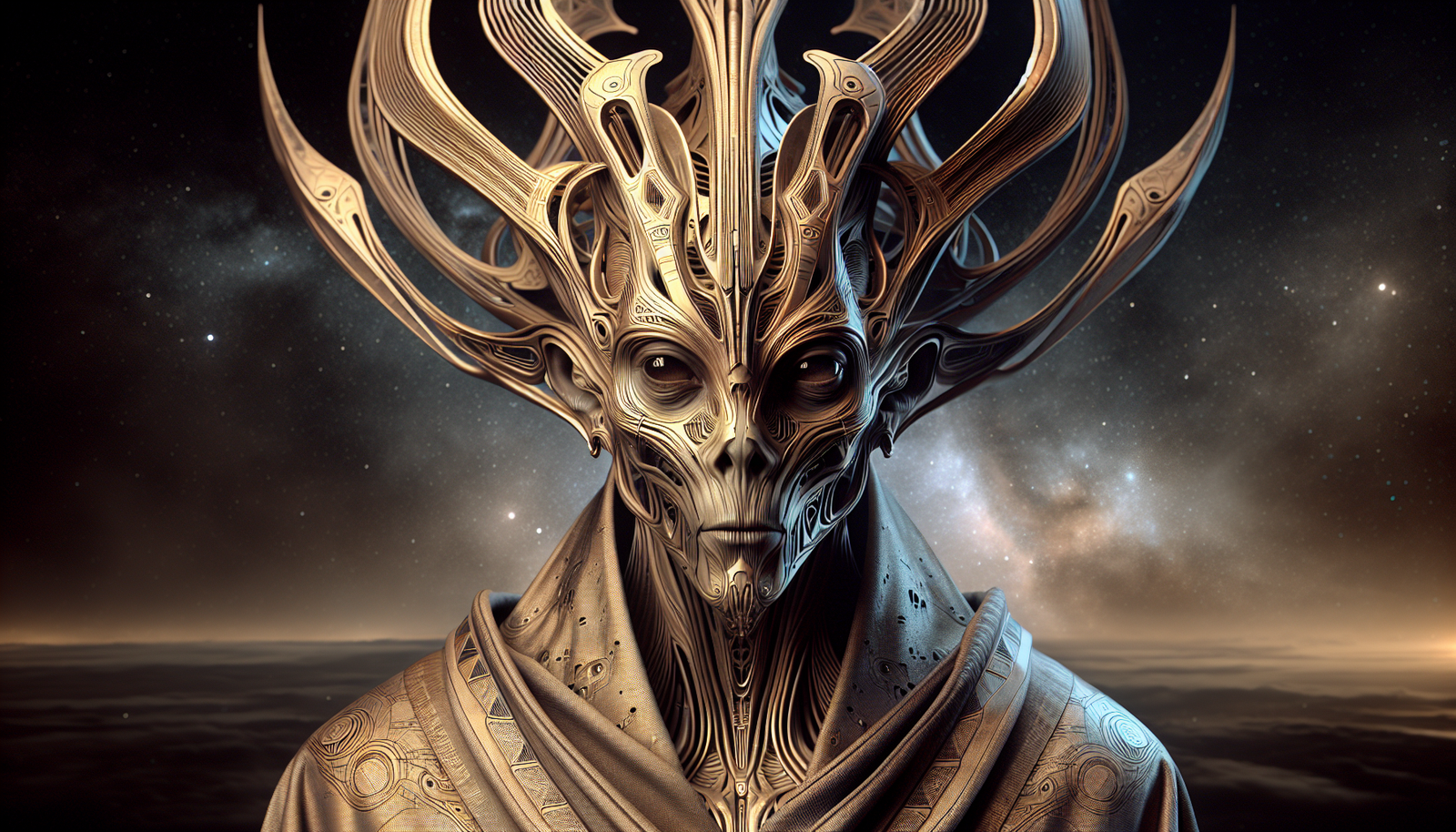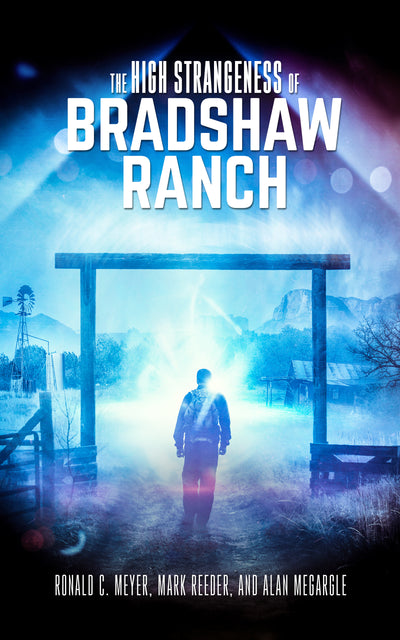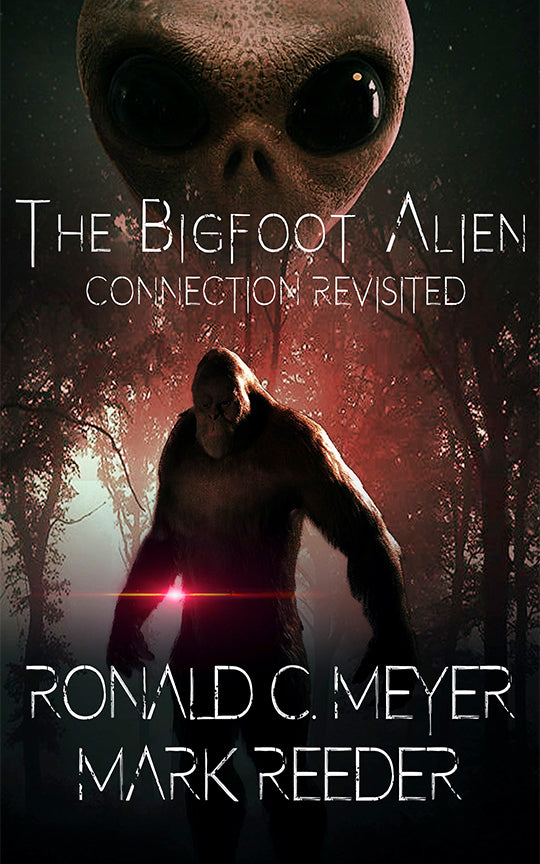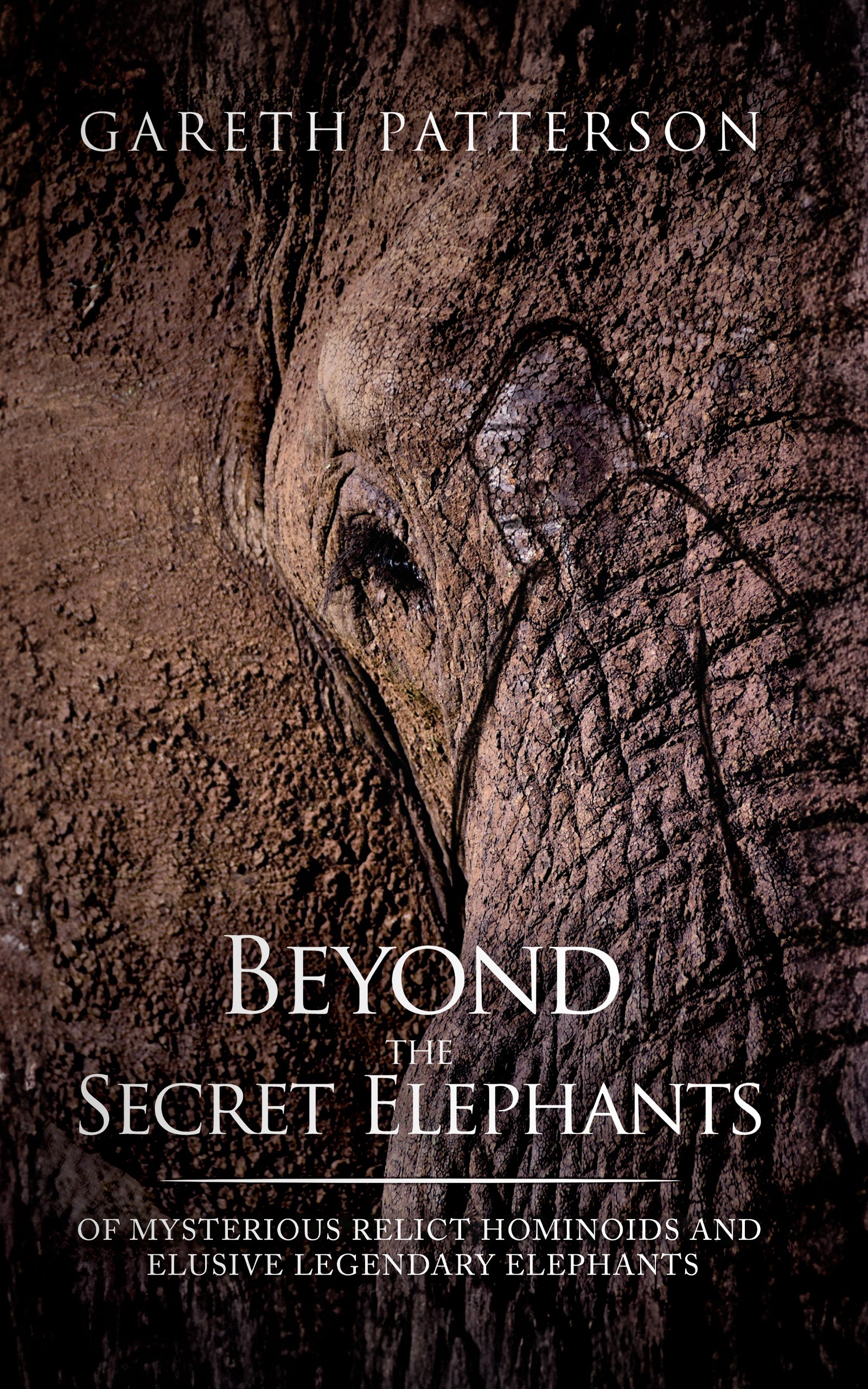Sumerian Gods as Aliens: Ancient Astronaut Theory Explained

By Elaine Westfield, Ufologist
What if the gods worshipped by humanity's first great civilization weren't mythological beings but visitors from another world? What if the sudden birth of human civilization wasn't a natural evolution but the result of extraterrestrial intervention?
These provocative questions lie at the heart of one of the most controversial alternative theories about our past: the idea that the Anunnaki, the powerful deities of ancient Sumer, were actually advanced beings from another planet who came to Earth, manipulated our genetics, and kickstarted human civilization.
The story begins in ancient Mesopotamia, in what is now southern Iraq. Around 4500 BCE, Sumerian civilization suddenly bloomed between the Tigris and Euphrates rivers. What puzzles mainstream historians-and what ancient astronaut theorists consider their smoking gun-is how this society appeared with such apparent suddenness. The Sumerians seemed to emerge fully formed, with sophisticated writing, mathematics, astronomy, architecture, and social structures that far outpaced their contemporaries.
This rapid advance from primitive hunter-gatherers to city-builders with complex knowledge is often called "The Sumerian Problem." And at the center of Sumerian religion were the Anunnaki, whose very name provides tantalizing clues. Translated as "princely offspring" or "those who from heaven came down," the Anunnaki were depicted as powerful beings who controlled human destiny.
In the 1970s, author Zecharia Sitchin proposed a radical interpretation of Sumerian texts, suggesting these gods were actually extraterrestrials who visited Earth for their own purposes. While roundly rejected by mainstream archaeology, his ideas sparked a movement that continues to question our understanding of human origins.
The Sumerian Civilization: A Leap in the Dark?
The abrupt appearance of Sumerian civilization remains one of archaeology's most persistent puzzles. Unlike other ancient societies that show clear evolutionary stages, the Sumerians seem to have materialized with a complete cultural package that included the world's first writing system.
Cuneiform, their revolutionary writing method, wasn't primitive picture-drawings but a sophisticated system capable of expressing complex ideas. They divided time into units we still use today-60-minute hours, 60-second minutes-and possessed astronomical knowledge that seems impossibly advanced for people who supposedly had no telescopes.
"It was all of the sudden because at that point humanity consisted of hunter gatherers and then all of the sudden we have an advanced society," notes one researcher in the field. Their architectural achievements, particularly ziggurats (stepped pyramid temples), required engineering knowledge that challenges our understanding of what ancient people should have been capable of accomplishing with primitive tools.
Mainstream archaeology attributes this apparent leap to the favorable agricultural conditions of Mesopotamia, trade contacts, and the natural human capacity for innovation. Yet proponents of ancient astronauts theories point to the statistical unlikelihood of so many "firsts" emerging in one place without external influence. While conventional historians see gradual development where evidence has simply been lost to time, ancient astronaut theorists see the fingerprints of advanced intervention.
Enter the Anunnaki: Deities or Visitors?
In traditional Sumerian mythology, the Anunnaki were the most powerful deities in the pantheon, descendants of An (the sky god) and Ki (the earth goddess). The oldest of these divinities was Enlil, the god of air and chief of the pantheon, who was said to have separated heaven and earth. Other key figures included Enki (god of water and wisdom), Inanna (goddess of love and war), Utu (the sun god), and Nanna (the moon god).
These gods were depicted as anthropomorphic-having human form-but possessed extraordinary powers and were often described as being of tremendous physical size. They wore melam, an ambiguous "terrifying splendor" that affected humans with a physical tingling called ni. Their temples were considered their literal residences on Earth, where priests tended to their statues as physical embodiments of the gods themselves.
But what if these descriptions weren't mythological but attempts to understand advanced beings with superior technology? The "terrifying splendor" that caused physical reactions might have been energy fields or radiation effects from their technology. Their "horned caps" (depicted as multiple pairs of horns stacked vertically) could have been helmets or breathing apparatus. Their association with specific celestial bodies-Inanna with Venus, Utu with the sun, Nanna with the moon-might reflect their origins in our solar system or their responsibilities within it.
Ancient astronaut theorists suggest that phrases like "coming from heaven" weren't spiritual metaphors but literal descriptions of beings arriving from the sky. The "assembly of the gods," where the Anunnaki made their decisions, could have been a council of extraterrestrial administrators managing their Earth operations.
Zecharia Sitchin and the Nibiru Connection
In 1976, Zecharia Sitchin published "The 12th Planet," forever changing how many people viewed ancient Mesopotamian texts. After studying Sumerian cuneiform tablets for decades, Sitchin proposed that the Anunnaki weren't mythological figures but flesh-and-blood extraterrestrials from a planet called Nibiru.
According to Sitchin's controversial translations, Nibiru follows an extremely elongated orbit that brings it into our inner solar system approximately every 3,600 years. This rogue planet, he claimed, was home to a technologically advanced civilization facing an environmental crisis. Their atmosphere was deteriorating, and they determined that suspending gold particles in the air could repair it-but they needed massive quantities that their home planet lacked.
Earth, with its abundant gold deposits, provided the solution. Around 450,000 years ago, Sitchin claimed, the Anunnaki established mining operations, particularly in Africa. Initially, they brought their own workers-the Igigi, described in texts as lesser deities who "carried the toil" of the Anunnaki.
"After forty days, the Igigi rebel," explains one account, unable to endure the harsh mining conditions. This labor revolt created a critical problem for the Anunnaki operation-one that would lead to a fateful decision with implications for all humanity.
Mainstream scholars and linguists overwhelmingly reject Sitchin's translations and interpretations, pointing to numerous inconsistencies with established understandings of Sumerian language and culture. They view his work as creative but ultimately fictional reinterpretations of ancient myths. Nevertheless, his ideas have proven remarkably resilient in popular culture, spawning an entire genre of alternative ancient history.
The Genesis of Humanity: Alien Intervention in Our DNA?
With their workforce in revolt, the Anunnaki faced a dilemma. According to ancient astronaut interpretations of Mesopotamian texts like the Atra-Hasis epic, this crisis led to a revolutionary solution: creating a new slave species to mine gold.
Enki, the god of wisdom and creation, proposed genetically engineering a worker by combining Anunnaki DNA with that of an existing Earth hominid (possibly Homo erectus). As one researcher states, "They combined their own genetic material with that of the ancestors of human beings, resulting in a hybrid race that would serve under their command."
In the ancient texts, humans are described as being made from "clay mixed with the blood of a god." Ancient astronaut theorists interpret this as symbolic language describing genetic manipulation-clay representing Earth's primitive hominids, divine blood representing Anunnaki DNA. The first successful hybrid was named "Adamu" (strikingly similar to the biblical Adam), designed to be intelligent enough to take instructions but not advanced enough to challenge Anunnaki authority.
This interpretation offers an explanation for what paleoanthropologists call the "cognitive revolution"-humanity's seemingly sudden leap in mental capabilities and abstract thinking around 70,000-50,000 years ago. While mainstream science attributes this to natural evolution, ancient astronaut proponents suggest it represents the genetic tinkering of our extraterrestrial creators.
Some enthusiasts point to peculiarities in human genetics as potential evidence. Human chromosome 2 appears to be a fusion of two chromosomes present separately in other primates-a unique feature that distinguishes us from our closest relatives. The vast amount of "non-coding" or "junk" DNA in the human genome is also cited as potentially containing embedded information or deactivated capabilities placed there by our supposed creators.
From a scientific perspective, these genetic features have natural explanations-chromosome fusion happens through established evolutionary mechanisms, and "junk" DNA serves various regulatory functions being actively researched. Yet the lingering questions about human origins continue to fuel speculation about possible external intervention in our evolutionary story.
Hierarchy, Conflict, and the Great Flood: Anunnaki Dynamics
The ancient texts describe a complex political structure among the Anunnaki, with internal conflicts that directly impacted humanity's fate. At the top of this hierarchy sat Anu, the supreme king who mostly remained on Nibiru. His sons Enlil (chief administrator on Earth) and Enki (head scientist) embodied contrasting approaches toward the newly created humans.
Enlil viewed humans as mere tools-slaves created for a purpose who were becoming too numerous and troublesome. Enki, however, having engineered humanity, developed an attachment to his creation. This fundamental disagreement shaped humanity's early development and led to one of the most dramatic events in the narrative: the Great Flood.
According to the Sumerian flood story, which predates the biblical account of Noah by thousands of years, humanity had multiplied rapidly, becoming noisy and disruptive. When signs indicated that a catastrophic flood was approaching (possibly triggered by Nibiru's gravitational effects during a close passage), Enlil and the ruling council saw an opportunity to eliminate the human problem entirely.
Enki, however, secretly warned Ziusudra (the Sumerian "Noah," called Utnapishtim in the later Epic of Gilgamesh) about the coming deluge and instructed him to build a vessel to preserve human and animal life. When the waters receded and Enlil discovered that humans had survived, he was initially furious but eventually accepted their continued existence as inevitable.
From a geological perspective, there is indeed evidence of major flooding events in Mesopotamia around 5000-4000 BCE, when melting glaciers raised sea levels worldwide. What ancient people experienced as a world-ending catastrophe might have been regional flooding of extraordinary scale-or, as ancient astronaut theorists suggest, a global cataclysm possibly triggered by Nibiru's passing that reshaped Earth's surface.
The Post-Flood World: Departure, Knowledge, and Kingship
After the flood waters receded, the Anunnaki faced a transformed Earth. According to ancient astronaut interpretations, this period marked a significant shift in human-Anunnaki relations. With their mining operations disrupted and their purpose on Earth largely fulfilled, many Anunnaki prepared to return to Nibiru.
Before departing, however, they established a new world order. Instead of directly controlling humans as slaves, they created the institution of kingship-human rulers who would govern in their name. "The people with the most power in old Sumeria were the scribes that they had the connection to the gods," notes one researcher. These human intermediaries received special knowledge and authority, establishing the concept of divine right to rule that would dominate human politics for millennia.
The Sumerian King List, an ancient text recording early dynasties, contains a fascinating anomaly: pre-flood kings are described as ruling for tens of thousands of years, while post-flood kings have progressively shorter reigns approaching normal human lifespans. Ancient astronaut theorists suggest these extended lifespans might reflect rulers with Anunnaki genetic heritage or simply different time measurements based on Nibiru's longer orbital period.
More significant is what the departing Anunnaki supposedly left behind: knowledge. "Before their departure they bestowed upon humans knowledge in various domains such as architecture, mathematics, music, and writing," one account states. This transfer of information could explain the remarkable advances of early Sumerian civilization and other ancient cultures-their seemingly impossible astronomical knowledge, mathematical precision, and architectural achievements were gifts from their departing gods/extraterrestrial benefactors.
The Anunnaki didn't completely abandon Earth, according to these theories. Some remained to guide key human developments, while others promised to return when Nibiru's orbit brought them back to our cosmic neighborhood.
Physical Appearance and Potential Traces
What did the Anunnaki look like? Ancient depictions show them as humanoid but with distinctive features. They're consistently described as being of impressive stature-sometimes gigantic-and possessing a frightening radiance. In art, they're often shown wearing horned headdresses, which some interpret as helmets or specialized breathing apparatus.
Ancient astronaut enthusiasts point to various archaeological findings as potential evidence of the Anunnaki or their hybrid offspring. One example is Queen Puabi of Ur, whose burial site revealed an unusually elongated skull. While mainstream archaeology attributes such cranial deformation to artificial binding practices found in many ancient cultures, alternative theories suggest these unusual skulls could represent non-human or hybrid physiologies.
The Ubaid figurines discovered in Iraq present another tantalizing puzzle. Dating to around 6000 BCE, these strange artifacts depict humanoids with elongated heads, large almond-shaped eyes, and unusual physical features. Conventional archaeology views them as stylized representations of humans, perhaps showing cultural practices like head binding or ceremonial masks. Ancient astronaut theorists, however, suggest they might be literal depictions of the Anunnaki or human-Anunnaki hybrids.
Rock art from various global locations-from the Sahara's Tassili n'Ajjer to Australia's Wondjina figures-shows beings with unusual features sometimes interpreted as helmets, halos, or spacesuits. The famous "White Lady" of Brandberg, Namibia, appears to show a figure with possible non-African features, prompting speculation about ancient contact.
Perhaps most famously, the Nazca Lines of Peru-massive geoglyphs only fully visible from high altitudes-have been interpreted by some as landing strips or navigational markers for aerial vehicles. Mainstream archaeology firmly rejects this, seeing them as ceremonial pathways related to water rituals in the desert environment. Experiments have shown they could be created using simple tools and techniques available to the ancient Nazca people.
Advanced Technology in Myth and Ancient Texts
When ancient texts describe the awesome powers of their gods, were they witnessing advanced technology beyond their comprehension? Ancient astronaut theorists believe many mythological accounts can be read as primitive descriptions of sophisticated equipment and weapons.
In Sumerian texts, the "Me" were mysterious objects or attributes that granted divine powers. The gods carried these devices, which controlled various aspects of civilization. From an ancient astronaut perspective, these might have been technological devices-portable computers, communication devices, or scientific instruments-that appeared magical to primitive humans.
The catastrophic destruction of Sodom and Gomorrah, described biblically as fire and brimstone raining from the sky, has been interpreted by some as an account of advanced weapons deployment, possibly even nuclear in nature. Interestingly, excavations at Tell el-Hammam in Jordan have revealed evidence of an airburst event around 1650 BCE that caused extreme heat and destruction consistent with the biblical account.
Ziggurat temples, the massive stepped structures built by the Sumerians, pose their own technological mysteries. Their precise orientation to celestial bodies suggests sophisticated astronomical knowledge, while some theorists propose they served as landing platforms or visual markers for aerial craft. The immense platform at Baalbek, Lebanon, with its precisely cut stones weighing up to 800 tons, challenges our understanding of ancient engineering capabilities.
The "Thunderbird" accounts found across cultures-beings that descended from the sky amid noise and light-mirror modern descriptions of aircraft or spacecraft. When King Gudea of Lagash described a vision of Ningirsu (a Thunderbird deity) descending from the sky, was he encountering an Anunnaki arriving in a vehicle? "If you know nothing about high technology and somebody descends from the sky in a vehicle," one researcher notes, "well of course you're going to signify a person with wings because they came from the sky."
In the Epic of Gilgamesh, the hero visits "The Landing Place" where he witnesses the gods ascending and descending amid fire, smoke, and thunderous noise. Archaeological expeditions have identified this location with Baalbek, where the massive stone platform might have served as a landing pad for Anunnaki vessels-a far-fetched claim by mainstream standards but one that attempts to explain the site's enormous megalithic blocks.
Anunnaki Influence Across Ancient Cultures
The sudden emergence of advanced civilizations wasn't limited to Sumer. Similar "quantum leaps" in human development occurred in Egypt, the Indus Valley, China, and later in Mesoamerica. Did the Anunnaki-or similar extraterrestrial groups-influence these cultures as well?
Ancient astronaut theorists point to striking similarities between Sumerian deities and gods from other pantheons. Anu, the Sumerian sky god, parallels the Greek Cronos, both eventually overthrown by their sons. Enki, the clever creator god favorable to humanity, resembles Prometheus, who gave fire to humans against Zeus's wishes. Enlil, the storm god and chief deity, shares attributes with Zeus/Jupiter. These parallels extend to Egyptian gods like Ra, Shu, and Thoth, suggesting a common origin or influence.
Biblical narratives offer particularly intriguing connections. Genesis 6 describes "sons of God" who took human wives, producing the Nephilim-giants and "mighty men of renown." The Book of Enoch elaborates that these beings, called "Watchers," taught humans metallurgy, cosmetics, sorcery, and astronomy before a great flood was sent to cleanse the Earth. The parallels to the Anunnaki narrative are striking-advanced beings interbreeding with humans, sharing forbidden knowledge, and a devastating flood as divine punishment.
Even more provocative are ancient astronaut interpretations of biblical passages like Ezekiel's vision of a "wheel within a wheel" accompanied by strange creatures. Traditional interpretations view this as divine revelation, but ancient astronaut theorists see a primitive person's attempt to describe advanced technology-perhaps a spacecraft with multiple rotating sections. Josef Blumrich, a former NASA engineer, even published technical drawings of what Ezekiel might have witnessed, based on the biblical description.
The "pillar of cloud by day and fire by night" that guided the Israelites in Exodus has been reinterpreted as a technological guidance system. The "star" that led the Magi to Bethlehem, with its unusual movement and ability to stop over a specific location, has been speculated to be a directed aerial phenomenon rather than an astronomical event.
Indigenous traditions worldwide reference "star people" who came from the sky bringing knowledge. The Hopi speak of kachinas, the Dogon of Mali claim ancient knowledge about the Sirius star system, and multiple Native American tribes trace their ancestry to beings who descended from the stars. While anthropologists view these as creation myths, Sumerian myth reveals extraterrestrial life according to ancient astronaut theorists who see them as cultural memories of actual extraterrestrial contact.
The Anunnaki's Lingering Presence: Conspiracy and Speculation
If the Anunnaki were real, what happened to them? Where are they now? The ancient astronaut narrative offers several possibilities, ranging from plausible to increasingly speculative.
The most straightforward theory suggests they simply left Earth when their mission was complete, returning to Nibiru on its long orbit around our sun. Zecharia Sitchin predicted their eventual return, possibly coinciding with Nibiru's next approach to Earth. This return, he suggested, could bring dramatic revelations about human origins and perhaps new knowledge or technology.
A more complex theory proposes that some Anunnaki remained on Earth after the majority departed. These beings might have continued influencing human development from behind the scenes, perhaps explaining "leaps" in human knowledge throughout history. Some speculate they could be hiding in remote locations like Antarctica or underwater bases, explaining certain UFO sightings as their continuing activities.
At the fringes of these theories lies David Icke's controversial "reptilian hypothesis," which claims the Anunnaki were reptilian entities who continue to control Earth through bloodlines of human-reptilian hybrids in positions of power. This extreme view, rejected even by many ancient astronaut enthusiasts, combines the Anunnaki narrative with modern conspiracy theories about shadowy global control.
A more recent variation suggests the Anunnaki might be better understood as "cryptoterrestrials"-an advanced non-human species that evolved on Earth alongside us but remains hidden. Rather than extraterrestrial visitors, they could represent an Earth-native advanced civilization that retreated from human contact but occasionally interacts with our world.
Some theorists connect modern UFO phenomena directly to the ancient astronaut narrative, suggesting contemporary sightings represent ongoing Anunnaki monitoring of their human "project." The apparent technological leap in reported UFO capabilities-instantaneous acceleration, trans-medium travel, and physics-defying maneuvers-would be consistent with a civilization thousands or millions of years more advanced than our own.
What would the implications be if the Anunnaki did return? Would they come as benevolent teachers, revealing the true history of humanity and offering advanced knowledge? Or would they return to reassert control over what they might consider their property-a genetically engineered species created for their purposes? Such questions, while speculative, highlight the profound implications of the ancient astronaut hypothesis for human identity and our place in the cosmos.
The Debate Continues: Mainstream vs. Alternative
The ancient astronaut theory, particularly Sitchin's Anunnaki narrative, has been emphatically rejected by mainstream archaeology, history, and linguistics. The criticisms are substantial and multifaceted.
Academic scholars argue that Sitchin's translations of Sumerian and Akkadian texts are fundamentally flawed, containing numerous errors and misinterpretations. Michael Heiser, a scholar of Semitic languages, has documented extensive problems with Sitchin's linguistic claims, demonstrating that many of his central arguments are based on incorrect readings of ancient texts.
Archaeologists point out that the "sudden appearance" of Sumerian civilization isn't so sudden when examined closely. Archaeological evidence shows clear developmental stages leading to urban civilization in Mesopotamia. The apparent gaps in the record likely represent our incomplete understanding rather than external intervention.
The construction of monuments like ziggurats and megalithic structures, while impressive, can be explained through conventional means. Experimental archaeology has demonstrated that ancient building techniques, combined with large labor forces, could achieve these feats without advanced technology.
Some critics have raised ethical concerns about the implications of ancient astronaut theories, suggesting they can diminish the actual achievements of ancient peoples by attributing their accomplishments to extraterrestrial intervention. This criticism has particular weight when applied to non-European civilizations, whose accomplishments have historically been undervalued or appropriated.
Despite these substantial criticisms, the fascination with ancient astronaut theories persists in popular culture. Why do these ideas continue to captivate millions despite their rejection by mainstream scholarship?
Part of the appeal lies in their ability to provide seemingly simple answers to complex questions about human origins and ancient achievements. They offer a grand unified theory of human history that connects disparate mysteries into a coherent narrative.
These theories also respond to a psychological need to find meaning and purpose in human existence. The idea that we were created by advanced beings for a specific purpose, rather than emerging through blind evolutionary processes, provides a sense of cosmic significance.
Most importantly, perhaps, they keep us questioning and wondering about our origins. While the specific claims of ancient astronaut theories may not withstand scientific scrutiny, the questions they raise about human potential, the mysteries of ancient civilizations, and the possibility of extraterrestrial life continue to drive both mainstream research and alternative inquiry.
The truth about our past likely lies somewhere between the standard archaeological narrative and the more extreme ancient astronaut claims. What's certain is that the mystery of the Anunnaki-whether understood as mythological constructs or something more-continues to inspire us to look both to the stars and into our distant past for answers about who we are and where we came from.
From Bigfoot to UFOs: Hangar 1 Publishing Has You Covered!
Explore Untold Stories: Venture into the world of UFOs, cryptids, Bigfoot, and beyond. Every story is a journey into the extraordinary.
Immersive Book Technology: Experience real videos, sights, and sounds within our books. Its not just reading; its an adventure.


























